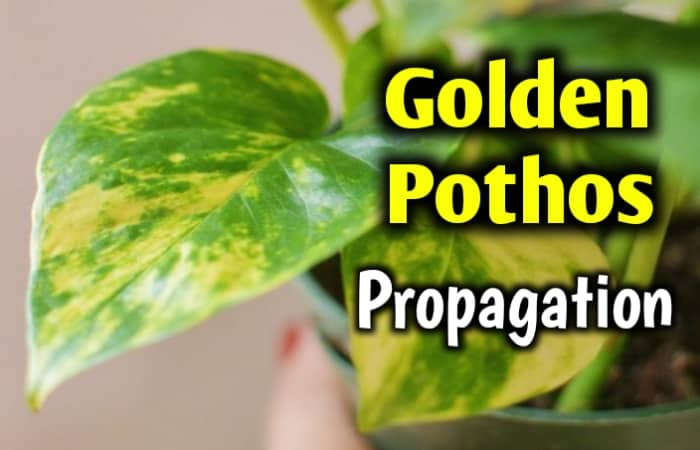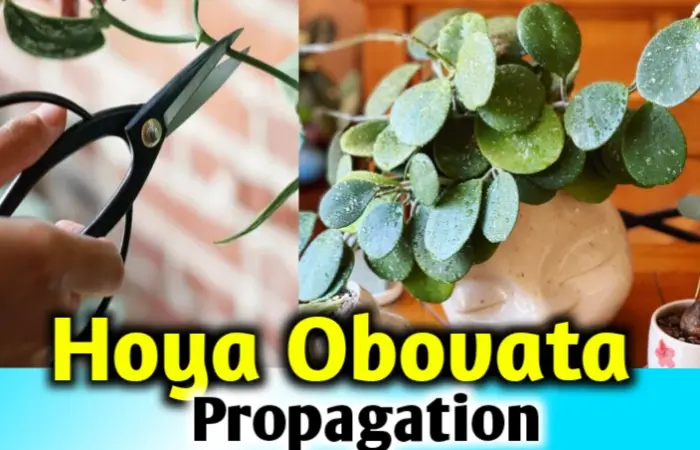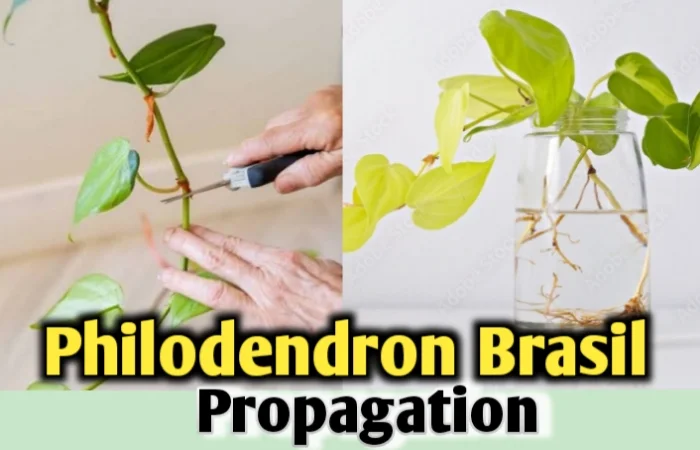How to propagate Monstera Albo? [Both soil & water medium]
To propagate monstera albo just cut a stem from a healthy and disease-free mother plant and planting that cutting in a new pot where a soil mixture is prepared using soil and sphagnum moss. Nodes should be present in the stem. That’s it.
Why are you getting troubled about finding a monstera albo plant where you can propagate it yourself?
Monstera albo has a high demand for houseplant lovers. The natural whitish lines on the green surface are attractive to all. But as it is a rare plant, many gardeners want to know about the propagation procedure of this plant.

Monstera albo propagation
Monstera albo, a variegated plant, belongs to one of the subspecies of monstera deliciosa native to central America. The plant can grow up to 30 feet.
The white painting on the dark green surface will always attract you when you place a monstera albo plant inside your home or garden. But why do we need monstera albo propagation?
I can mention some reasons here that will make you understand the importance of monstera albo propagation.
Rare plant
Monstera albo is a very rare plant. You may not always get it in your localities. Ordering from different sites may sometimes disappoint you to get a perfect monstera albo plant.
Expensive
If you search for the price of a monstera albo plant in different places, you will understand how expensive this plant is!
Firstly, this plant cannot be grown from seeds. Besides, this variety is not genetically produced as it is a natural mutant. Sometimes, cutting cannot even initiate the same plant.
So they are too expensive to get.
Variegation
The variegation of monstera albo is tough to maintain from plant to plant. So many of the nurseries fail to provide the best quality of a monstera albo plant.
That’s why it is best to go for propagation if you want to have a monstera albo from anyone or want to multiply yours.
Monstera albo propagation mechanism
Monstera albo propagation is an easy but lengthy procedure as it is a hard but slow-growing plant. The inner metabolism and other activities respond sequentially to the new surroundings.
The mechanism inside them is very simple. You have to plant a stem that must contain nodes. The nodes may initiate aerial roots or fibrous roots. The adventitious roots that come from the nodes receive water and nutrients from the water or soil medium.
Then reach the nutrients and water from the roots to all parts of the body. The body synthesizes them and prepares them according to the demand of food processing and other physiological activists.
So ultimately, after 4 to 6 weeks, the new roots come out and a new baby plant is initiated.
Propagules
Every part of a plant is not suitable for propagation. Commonly, you cannot grow a new baby plant from a flower part. So some specific parts are needed for propagation purposes.
In the case of the monstera albo plant, the best propagule is the stem. I want to clarify the term “propagule”. Propagule is that part of a plant that is separated from the mother plant and then is planted in a new pot for the growth of a new baby plant.
But why do we use the stem for monstera albo propagation?
Yeah! Some benefits encourage the monstera albo propagation from the stem. A healthy stem consisting of at least one node can initiate the birth of a new plant. You cannot use only a leaf as this will not initiate root. Again, monstera albo cannot be cultivated through seeds. So you will need a stem to propagate.
Factors that will ensure the best propagation
The best propagation includes various aspects. It is not only about cutting and planting. Some other procedures and techniques should also be known oto you.
Plant factors
Plant factors mean the overall growth and development of the mother plant that is selected for propagation. This is a crucial factor as it will affect the condition of the new plant. The mother plant should contain some specific characteristics –
Disease-free
The plant should be totally disease-free. It should not contain any spot, curliness or fragileness, yellowing or brownish area. It should be free from wilting and damping off.
Healthy
The plant should have a glossy look. The surface of the leaves and stem will be shiny and the leaf color should be well-organized. Such a plant is called a healthy plant.
Matured
The rigidness of the plant will be mentionable. The strength of the root formation will be better and the plant should achieve enough maturity.
Environmental factors
The condition of the surroundings affects the propagation success. You have to ensure the best quality there.
Dust-free
The environment should be free from any kind of dust or nasty products so that bacterial organisms cannot enter there.
Best time in the day
The best time of a day for propagation is the early morning. The environment remains cool and the temperature remains moderate even if it is a summer day. This reduces the possibility of wilting.
High humidity
High humidity is important for propagation. The cutting will have a suitable environment for growth.
Human factors
As you are conducting the method, some precautions should also be maintained by you so that the cutting may remain free from any type of unwanted touch.
Cleanliness
You should clean your hand properly before germination. It is best to use clean gloves to avoid direct touching.
Skill
I mentioned earlier that the propagation of monstera albo is tough. So if you are skilled, you would understand easily what to do for the best propagation procedures.
It is better if you are experienced in this job.
Instrumental factors
Here comes the instrumental precautions that are taken to complete the whole procedure. You will need some instruments to run a propagation system. Those are-
- A sharp knife
- A new pot
- A glass jar(if propagated in water)
- A watering cane
- Polythene sheets
- Soil mixture
The soil mixture should be of a 1:1 ratio for the materials of soil and sphagnum moss. You can also use perlite and coir.
Propagation procedures
You can run the propagation procedures both in soil and water. Both of the procedures are almost the same. A little difference will be seen as the mediums are different.
Cutting in soil
Firstly, I want to explain the method of planting the cutting in soil. The soil medium should be preprepared and well established.
Step 1- Watering the plant
Before starting the propagation, water the plant properly. Water should not clog there but the soil should be wet.
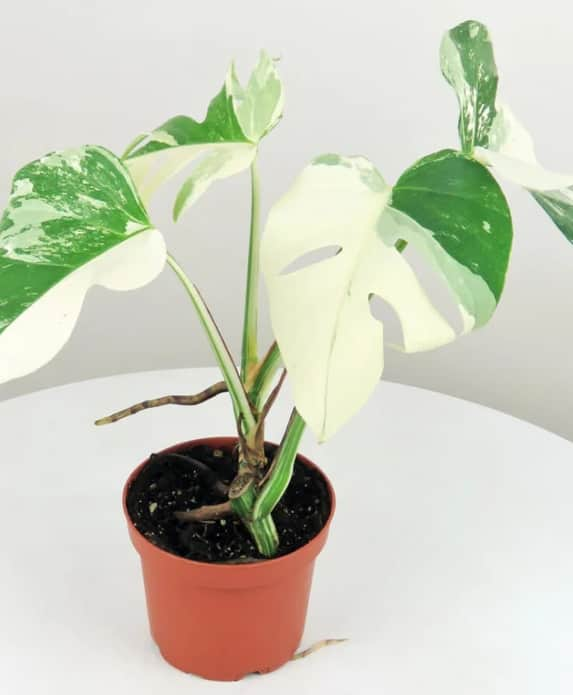
Step 2- Cutting
Separate a stem from the mother plant. The stem should consist of at least a node. It is better if you can keep 2-3 nodes.

Step 3- Planting in the soil
Plant the cutting in the soil mixture that you prepared earlier. Keep one-half of the mixture in the pot. Place the cutting and then provide the rest of the mixture.
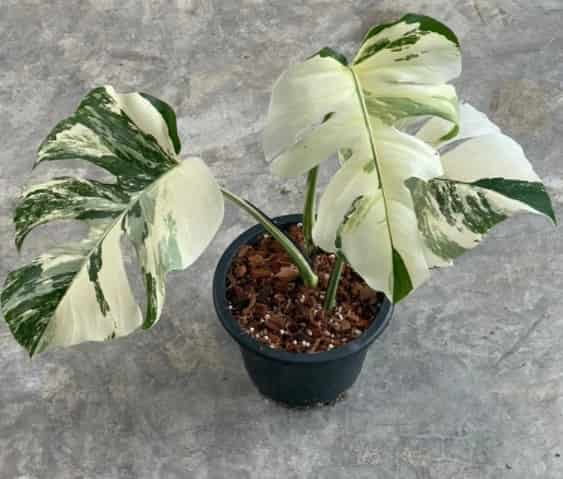
Step 4- Watering
Water the cutting with a watering can or any suitable watering instrument that is available to you.
Step 5- Root initiation
Adventitious or fibrous roots will be sprouted from the nodes within 4-6 weeks.
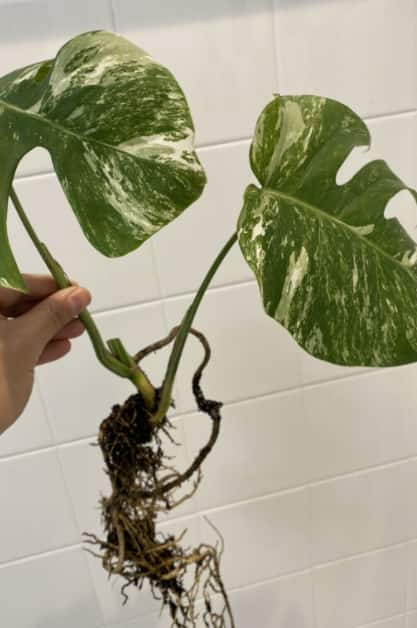
Cutting in water
Roots can grow more easily in the water medium than in the soil medium. So you can choose a water medium for better root sprouting.
Step 1- Watering the plant
Water the mother plant before starting the propagation method. Don’t water too much which creates water stagnation.
Step 2- Cutting
Cut a part of the stem with nodes. Remove the leaves to reduce the excessive use of water.
Step 3- Placing in the water
Take a clean and clear glass jar. Keep the cutting in that jar so that the nodes are submerged in the water.

Step 4- Sprinkling
You can sprinkle some water to increase the humidity of the surroundings. This is more useful on summer days.
Step 5- Root initiation
Roots will come out within 3-5 weeks. You should notice the growth to evaluate the percentage of the propagation success.
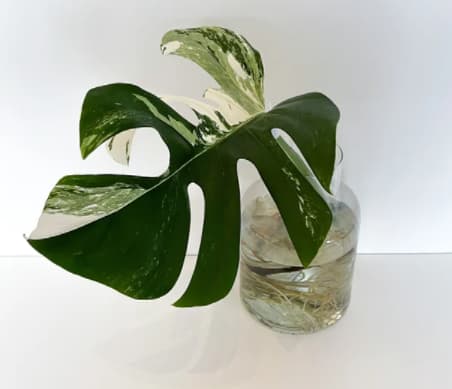
Step 6- Transformation to soil
You can transfer the new plant from water medium to soil. If you do this, keep the roots for some more days. Otherwise, it won’t able to survive in the soil medium.
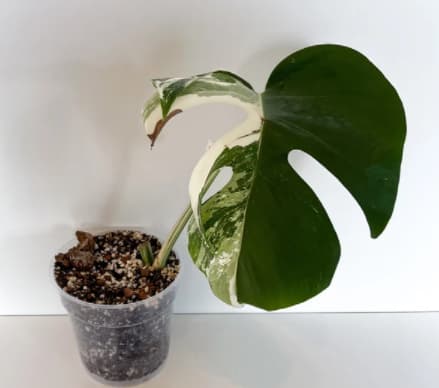
Best propagation medium
It is always a hard question to identify the best method. According to the suitability, it will vary from person to person what the best method is.
Root initiation in water may support the plant to come out faster than in the soil medium. But the percentage of success is a little higher in the soil medium.

But both of the mediums are equally ideal for growing a monstera albo plant.
Do monstera albo need a rooting hormone?
Monstera albo propagation is much facilitated if you use a rooting hormone.
In a general way, the cutting can grow by its natural process. But rooting hormone helps to activate the inner mechanism more easily and quickly.
As monstera albo is a fast-growing plant, it will need near to 6 weeks though after using rooting hormone. But the percentage of success increases by it.
To use a rooting hormone, dip the cutting into the hormone at a range of 1-1.5 inches. Then plant it in the soil mixture. But it is not mandatory. You can avoid it in case of unavailability.
Why is my monstera albo propagation unsuccessful?
Monstera albo propagation is easy but not too much as the other houseplants because of its variegated colors. Sometimes it is tough to maintain the variegation in the new plant. This color dispersion is natural.
But if the root initiation is delayed or damaged, it is because of any fault at any point of the propagation procedure.

Generally, the wrong choice of the mother plant or disease attack during the propagation procedure is responsible for this failure. To avoid these terms, you should be conscious of all the steps of the method that you are conducting.
Here is a video for your convenience so that you can run the method smoothly.
Final thoughts
We are almost at the end of our discussion. Monstera albo propagation is the best method if you can handle it properly. You need not waste your time waiting for a purchase.
But you should strictly follow the precautionary measures. Try it out and decorate your room with a beautiful monstera albo plant.

